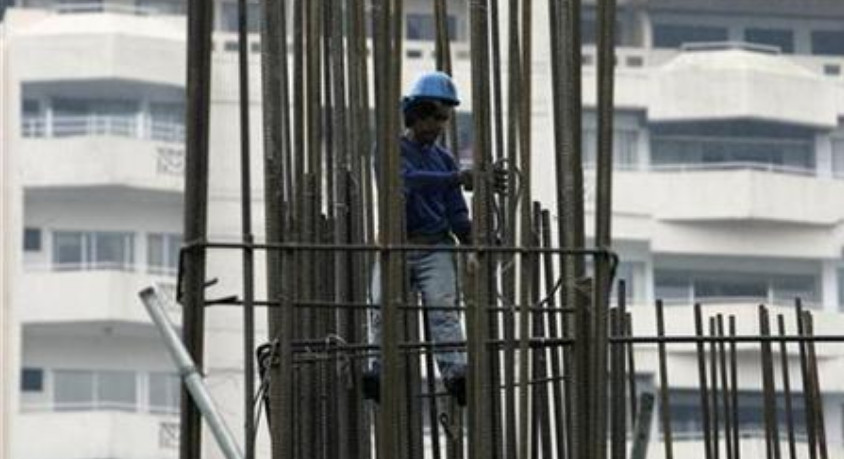Real estate equities look most promising in Asia Pacific

Here we explore the key dimensions of investing in listed real estate equities and explain why investing in real estate shares must be done at the regional level. We emphasize likely trends for listed real estate markets in the light of factors such as the rapidly expanding market share of online retailing and heightened credit risks for commercial real estate in the aftermath of lockdowns enacted by Western governments.
Listed real estate blends the characteristics of a real and financial asset, since listed real estate companies buy buildings and usually leverage their balance sheets to boost return on equity. Real estate companies deliver returns through rental yield, capital appreciation of buildings and often by developing new real estate assets, a riskier yet, in boom times, a very profitable activity. Local factors like demographics, economic growth and urbanisation drive the returns of both listed real estate equities and direct real estate.
The risk profiles of listed real estate equities vary significantly, both at the macroeconomic and the sector level. Real estate equities in emerging markets are subject to wild swings, while residential real estate offers low returns coupled with modest downside risk during recessions. At the sector level, investors can chose from the following real estate segments:
Commercial real estate includes office and retail space, hotels and industrial surfaces; it exhibits the highest degree of cyclical behaviour and the highest potential for return
Warehousing / logistical centres have thrived thanks to globalisation and booming online retailing; they remain attractive over the long term
Niche real estate assets like parking lots, self-storage space and senior housing target bespoke needs and are often very profitable
Residential real estate is usually low risk and generates smaller returns
Real estate prices including home prices rebounded quickly after the Great Financial Recession of 2008. A glance at past returns shows that listed US real estate strongly outperformed during the real estate bubble years of 2005-08, yet lagged US equities after 2009. Thanks to easy monetary policy / quantitative easing, US real estate stocks still offered solid returns over this time frame. In Switzerland, the SIX real estate index trounced the SMI from 2009 to 2019, boosted by a lack of yield in the Swiss bond market and rising residential and commercial real estate prices. UK real estate equities outperformed UK large caps and lagged the performance of mid-caps by only a small margin.
The outlook for real estate markets appears mixed, as the lockdowns have dented the attractiveness of commercial real estate within cities. Many companies are reducing their needs for office space in city centres, attracted by the flexibility of the home office. The boost experienced by online retailing will further erode the attractiveness of retail space. Landlords owning commercial real estate need to closely assess the trade-off between enforcing high rents against rising tenant default risks, an issue also affecting large Swiss real estate companies. Last but not least, as bond yields are likely to remain low, the scope for capital appreciation dwindles, placing the emphasis on rental yield as the major driver of returns in real estate investment. At the regional level, Asia Pacific ex Japan listed real estate equities boast low valuations, high dividend yields and attractive long-term growth prospects.
-- Contact us at [email protected]
-

Integration of GIS and BIM can drive development of smart city Dr. Winnie Tang
The China Association for Geospatial Industry and Sciences (“the CAGIS”) released the Top Ten Highlights of China's Geographic Information Industry in 2023, which provides much inspiration. The
-

Equip young people for the future Dr. Winnie Tang
In late February, the inaugural flight of an air taxi from Shenzhen Shekou Cruise Homeport to Zhuhai Jiuzhou Port took only 20 minutes with an estimated one-way ticket price of 200 to 300 yuan per
-

Are we raising a generation of leaders, or of followers? Brian YS Wong
The essence of education is defined not by the facts it imparts, but the potential knowledge it inspires students to individually pursue on their own. Put it this way – the ideal form of education
-

The urgent need for reforms to sex education in Hong Kong Sharon Chau
Nearly one in every four university students (23%) in Hong Kong has been sexually harassed, according to a 2019 report published by the Equal Opportunities Commission (EOC). A 2019 study found that
-

STEAM should be linked to real life Dr. Winnie Tang
In the 2017 Policy Address, STEM (science, technology, engineering and mathematics) education was proposed as one of the eight major directions to promote I&T development. Since then, funding has
-
首屆「中華文化節」六月開幕 感受中華傳統文化多元魅力
-
Russia’s nightmare – loss of Far East
-
呈獻精彩絕倫的音樂盛會
-
養顏即食花膠靚湯
-
非凡彩寶之旅 Winston Candy & Winston Kaleidoscope系列
-
My Brief Remarks – at the HKS China Conference
-
The perils of self-censorship
-
中華文化節2024系列~八台戲曲亮相中華文化節 新編粤劇《大鼻子情聖》打響頭鑼
-
DIOR MEN Fall 2024~Effortless Chic流麗衣櫥
-
伊藤詩織:紀錄片是改變的一部分















